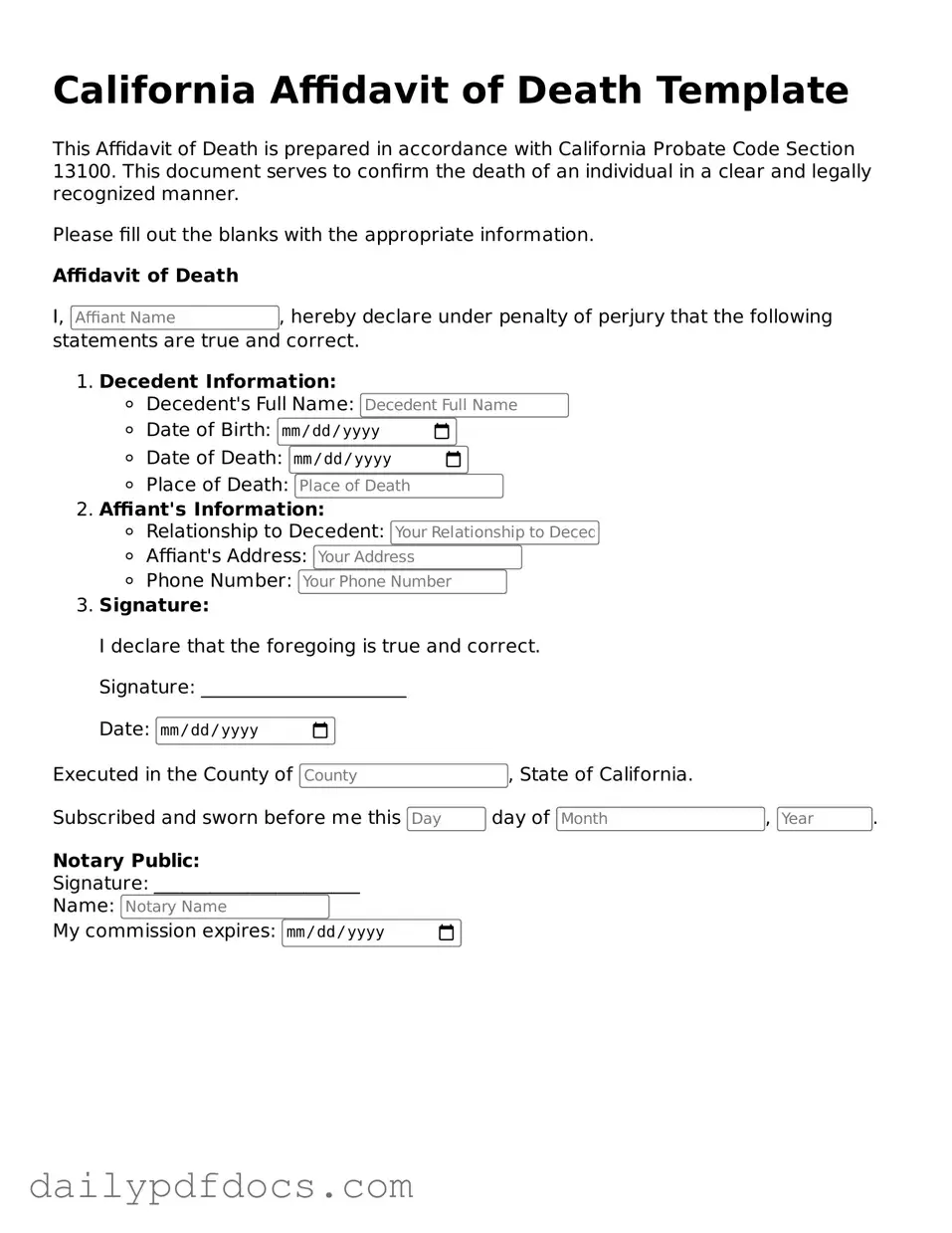What is the California Affidavit of Death form?
The California Affidavit of Death form is a legal document used to declare the passing of an individual. This form is typically filed with the county recorder's office to provide official notice of death. It serves as a crucial tool for settling the deceased's estate, transferring property, and addressing any other legal matters that may arise following their passing.
Who can file the Affidavit of Death?
Generally, any interested party can file the Affidavit of Death. This includes family members, heirs, or representatives of the deceased's estate. It is important that the person filing the affidavit has a legitimate reason to do so, such as managing the deceased's assets or fulfilling obligations related to their estate.
What information is required on the form?
The Affidavit of Death requires specific information to be valid. This typically includes the full name of the deceased, their date of birth, date of death, and the county where they passed away. Additionally, the affiant— the person filing the affidavit— must provide their own name, address, and relationship to the deceased. It’s essential to ensure that all details are accurate to avoid complications later on.
Is the Affidavit of Death a public document?
Yes, once filed, the Affidavit of Death becomes a public record. This means that anyone can access the document, which is often important for transparency in estate matters. However, sensitive information may be redacted in certain cases to protect privacy. Understanding the implications of public access is crucial for those involved in the deceased's affairs.
What happens after the Affidavit of Death is filed?
After filing the Affidavit of Death, the county recorder will officially record the document. This recording serves as a formal acknowledgment of the individual's death. The recorded affidavit can then be used to transfer property, settle debts, or address any other estate-related issues. It acts as a key piece of evidence for legal proceedings that may follow.
Can the Affidavit of Death be contested?
While the Affidavit of Death itself is a straightforward declaration of fact, disputes can arise if there are questions about the validity of the death or the authority of the person filing the affidavit. If someone believes the affidavit was filed incorrectly or fraudulently, they may contest it through legal channels. Such situations can be complex, often requiring legal assistance to navigate effectively.
